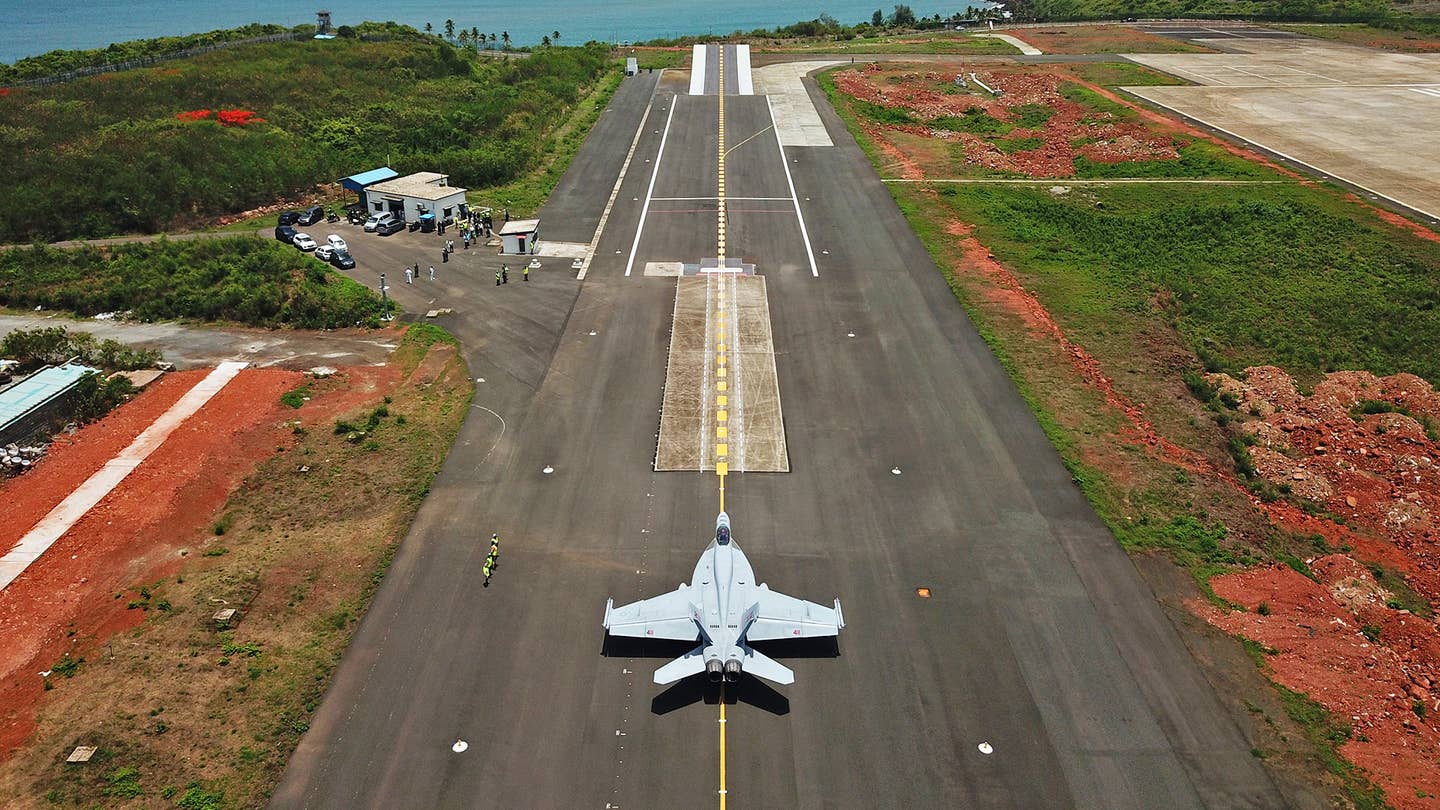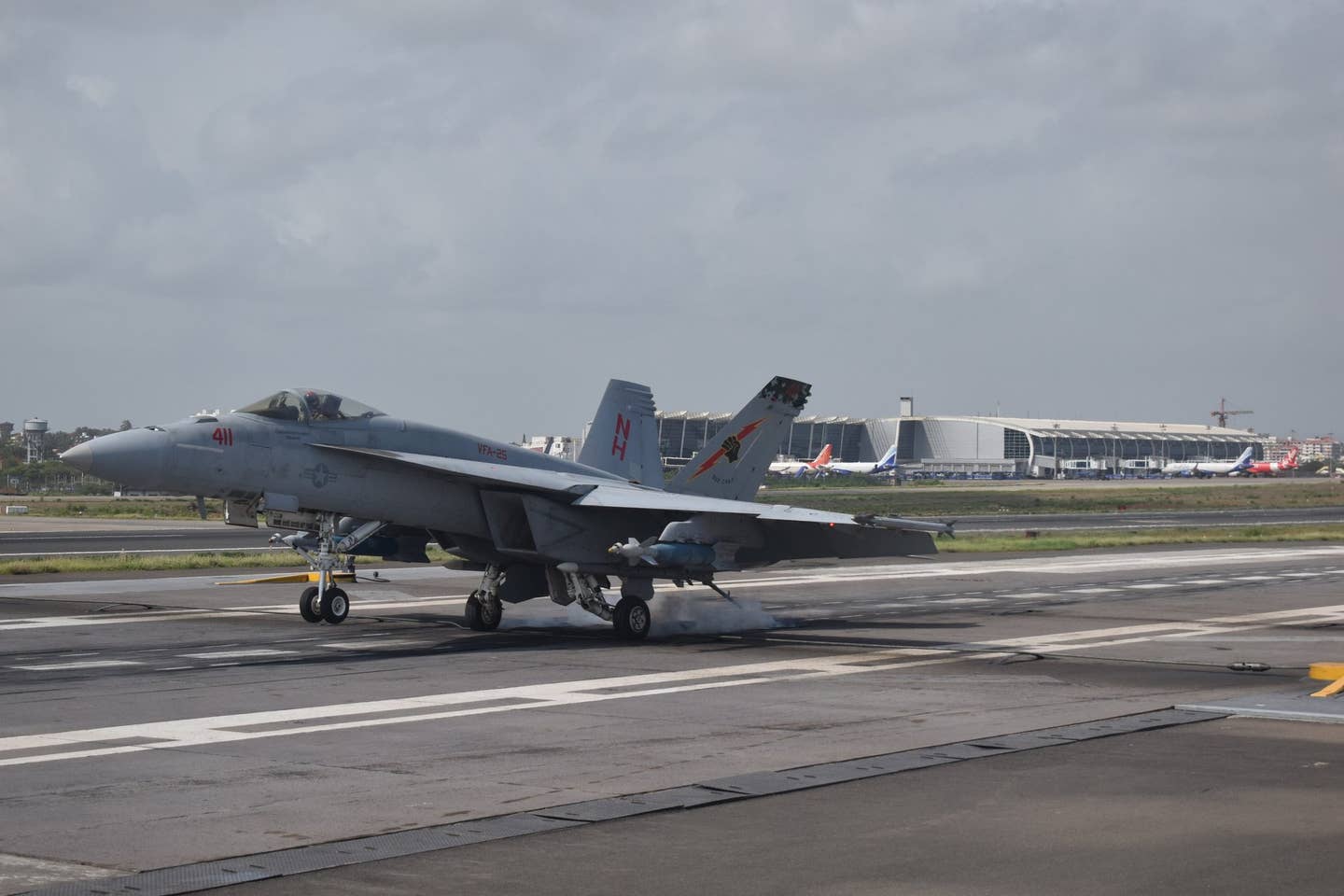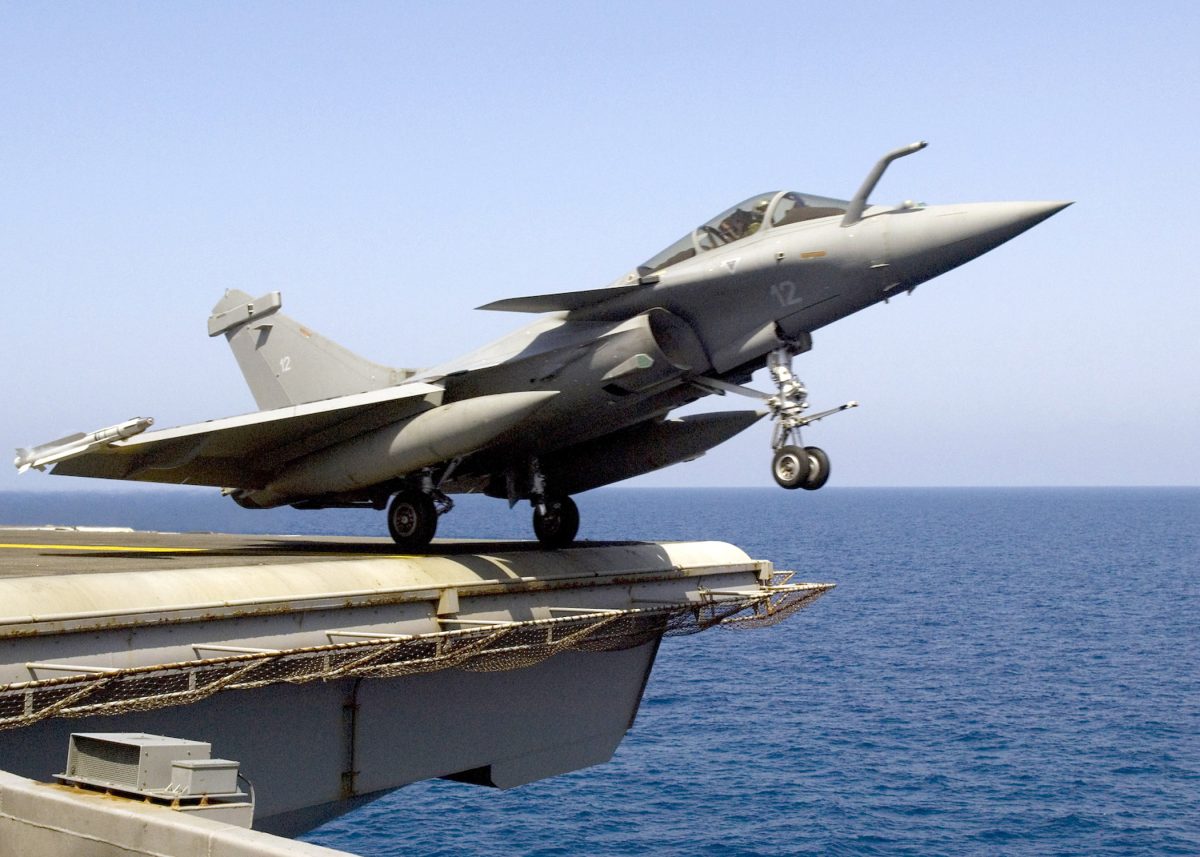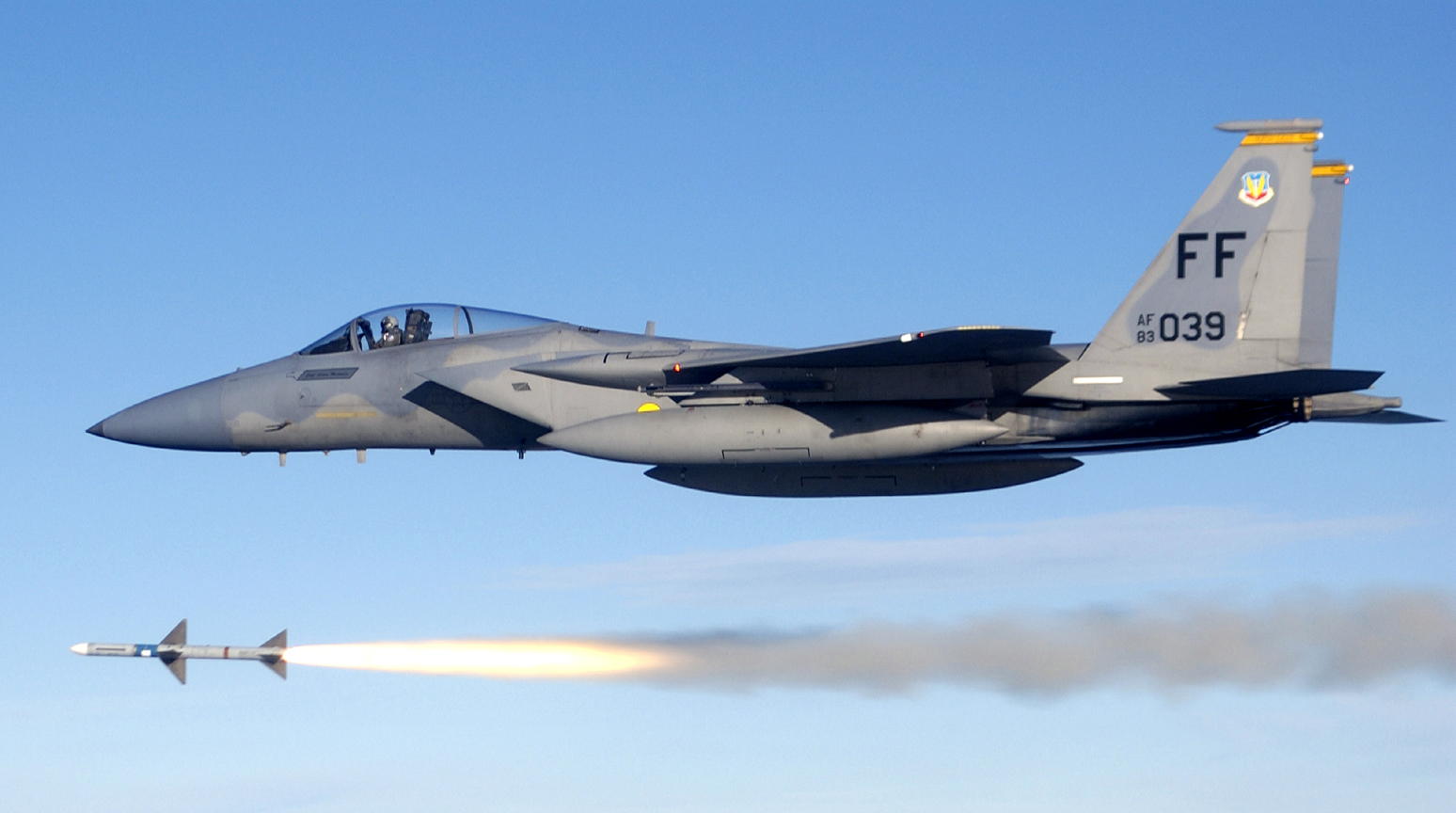Some of the world’s best fighter jets are competing neck-to-neck to seize Indian Air Force and Navy deals. Two firms, American Boeing and French Dassault Aviation are headed in direct competition as Super Hornets are challenging Rafale-M for the Indian Navy deal, and F-15EX (Eagles-II) are being offered at ‘irresistible’ rates to the Air Force.
Turkey ‘Shortlists’ Rafale Fighters For Its Air Force As US Congress Unlikely To Clear F-16 Sales – Top Commander
Boeing recently released a press release announcing the successful completion of its F/A-18 Super Hornet’s operational demonstration tests at Indian Naval Station Hansa in Goa, India, to demonstrate its capability for aircraft carrier operations.
F-18 Super Hornet is competing with the French Dassault Aviation’s Rafale-Marine (M) for the Indian Navy’s contract for multi-role naval fighters for its newly developed aircraft carrier, INS Vikrant, which is scheduled to be commissioned by August 15 of this year, coinciding with the 75th year of Indian Independence.
The Indian Navy wants to acquire a twin-engine aircraft to replace the existing MiG-29Ks currently being operated from INS Vikramaditya and enter into a government-to-government contract with either the US or French government for the purchase of over two dozen fighter aircraft.
As EurAsian Times reported earlier this month, the Indian Navy has already announced the completion of operational demonstrations of the Super Hornet and Rafale-M. It is now awaiting a final report on the performance of the two aircraft, which could reportedly take two months to prepare.

The two fighters carried out ski-jumps – a crucial take-off capability — from the shore-based test facility at INS Hansa in Goa to demonstrate their ability to operate from Indian aircraft carriers that use short take-off but arrested recovery (STOBAR) method to launch and recover aircraft.
Boeing Is Aggressively Marketing Super Hornet
According to Boeing’s press release, the Super Hornet performed multiple ski-jumps, roll-in, and fly-in arrestments, as well as performance flights, in various weights in the air-to-air, air-to-ground, and air-to-surface configurations, meeting the Indian Navy’s test requirements.
“The Boeing team was privileged to showcase the F/A-18 Super Hornet’s compatibility with Indian carriers in Goa,” said Alain Garcia, vice president, India business development for Boeing Defense, Space & Security, and Boeing Global Services.
“As the most advanced frontline multi-role naval fighter, the F/A-18 Super Hornet is one of the world’s most proven and affordable multi-role fighters and continues to evolve with the development of the next-generation Block III capability, which will be game-changing for India.”
Video of recent Boeing’s F/A-18 Super Hornet operational demonstration tests from Shore Based Test Facility at Indian Naval Station Hansa in Goa showcasing their ability to operate off @indiannavy’s aircraft carriers
VC: @Boeing_In pic.twitter.com/OXVLRDlY2j— Dinakar Peri (@dperi84) July 20, 2022
“With the Super Hornet Block III, the Indian Navy would not only get the most advanced platform but would also benefit from tactics, upgrades, and knowledge related to the naval aviation ecosystem that the US Navy offers,” he added.
Also, in a separate video that is circulating on Twitter, Alain Garcia said that a team of 60 personnel from the US Navy and Boeing took part in this operational demonstration.
In the same video, Boeing Test Pilot John Tougas explains that there were two missions in this operational demonstration. One was to “demonstrate ski-jump take-off compatibility with Super Hornet at significant combat weights with combat loads.”
In the images posted of the test, Super Hornet is seen loaded with two 500lb laser-guided bombs, AIM9Xs and AIM-120s.

While the second part of the mission, according to Tougas, was to make sure that “we get off the ship, we need to be able to get back on the ship,” which involved demonstrating arresting gear compatibility with a foreign-made arresting gear using the Super Hornet.
The Rafale-M had also reportedly completed these operational demonstrations in January. However, only Boeing has released the video and images of the trials. Boeing has repeatedly discussed the deal, while Dassault Aviation has been silent about it.

For example, a similar video was released by Boeing in 2020 of a test held at Naval Air Station (NAS) Patuxent River in Maryland to demonstrate the Super Hornets’ ability to operate from a STOBAR aircraft carrier for the Indian Navy. As part of that test, the F-18 performed eight ski jumps in various weights and configurations.
⛷ #SuperHornet hits the slopes!
Watch as an F/A-18 takes off from a ski-jump ramp, demonstrating the ability to operate effectively from @IndianNavy aircraft carriers. pic.twitter.com/eBSaYF97sy— Boeing Defense (@BoeingDefense) December 21, 2020
This shows that Boeing is aggressively marketing its F-18 as a perfect multi-role platform for the Indian Navy, and perhaps Dassault Aviation does not feel the need to do so because the Indian Air Force already operates the 36 land-based variants of the Rafale fighters, plus India has been a decade old customer of Dassault.
Or it could be that Boeing may have a better chance of bagging the Indian Navy’s contract as there have been some technical issues concerning Rafale-M’s suitability for the Indian Navy’s aircraft carrier.
Technical Issues With Rafale-M
Firstly, the Rafale-M cannot fold its wings, making it take up more space on the hangar deck. The weapons and tip rails of the aircraft have to be removed for it to fit into the Elevator, which will carry it to the maintenance bay below.
Whereas the Super Hornet has a folding wing mechanism, Boeing has confirmed in its official presentation to the Indian Navy that the aircraft can fit into the Lift of the INS Vikrant and INS Vikramaditya without needing removal of the radome cone and wingtip rails.
Also, F-18’s single-seater and twin-seater variants can operate from the aircraft carrier, unlike the Rafale-M, whose twin-seater variant works from the shore, which Boeing argues, may benefit the Super Hornet.
Furthermore, Rafale-M has a limited production of fewer than 50 units, as the only operator of this aircraft is the French Navy, which is said to make this platform more expensive than the Rafale jet operated by the French Air Force and Super Hornets.
While in the case of the F-18, nearly 1,500 legacy and present generation planes were produced over the last four decades, which should reduce certain operating costs because of economies of scale.

Boeing officials also highlight the interoperability factor, saying the Super Hornet is compatible with other systems and platforms in the Indian Navy’s service, like the MH-60 Romeo anti-submarine helicopters and P-8I Poseidon long-range maritime aircraft.
Boeing is also offering an India-specific sustainment program called ‘For India – By India’, which will allow India to maintain Super Hornets locally throughout its lifecycle, resulting in higher aircraft availability and competitive pricing for the Indian Navy.
As part of this sustainment program, Boeing will partner with India’s local industry, building upon the company’s nearly eight decades of presence in the country.
Boeing’s Twin Attack On Dassault
Apart from the Indian Navy, Boeing is also targeting the Indian Air Force (IAF) as a potential customer for its F-15EX Eagle II.
The IAF, after procuring 36 Rafale jets from France, proposed the MMRCA 2.0 tender to acquire 114 additional fighter jets. The tender is yet to be released. However, Boeing plans to pitch its F-15EX against Dassault Rafale, which many experts consider the favorite to win the contract.

Boeing is aggressively pitching its F-15EX, suggesting the fighter jet could be offered at a much lower price than its competitors.
Steve Parker, vice president and general manager of the Bombers & Fighters division within Boeing Defense, has reportedly indicated that Eagle II may cost lower than the expected $80 million unit price.
The figure usually quoted by the US Defense Department for the flyaway unit cost of the F15EX is $87.9 million, with per hour flying cost of $29,000, and when armaments and other equipment are added to it, the price per unit will reach somewhere between $98 to $110 million.
Whereas India purchased Rafales at a flyaway unit cost of $120 million with per hour flight costs ranging between $18000-$21000. Including the weaponry and the rest of the components, the price of Rafales exceeded $220 million per unit.
The F-15EX is the latest model of the F-15 air superiority fighters. The F-15EX is identical to a conventional F-15 but incorporates a new fly-by-wire system, a more effective processor, and advanced electronic warfare (EW) suite.
The Eagle-II is the world’s fastest (Mach 2.5) and most heavily equipped warplane (payload of 13.6 tonnes), with the greatest strike range of 1,200 nautical miles or 2,222 kilometers.
With Boeing’s F-18 Super Hornets looking favorites to win the Indian Navy deal, at least on papers, Boeing’s reported announcement of lowering the cost of its heavy-weight F-15 appears to be challenging French Dassault Aviation on both fronts.
- Contact the author at tanmaykadam700@gmail.com
- Follow EurAsian Times on Google News




